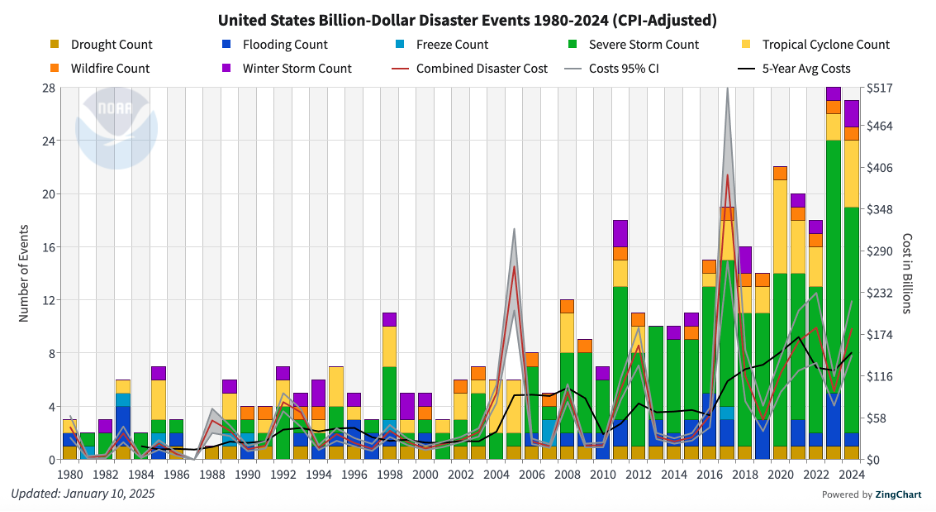AI x Climate Part 2: AI-Driven Opportunities in Climate
By
Virta Ventures
ON
May 29, 2024

Welcome back to Virta Ventures’ AI x Climate series, a multi-part deep-dive into the intersection between AI development and the climate space. We previously covered what constitutes a Climate AI startup and, today, we’re covering AI-driven opportunities and challenges in the climate space. Subscribe to our Substack to get our latest insights straight in your inbox!
AI presents myriad opportunities to build new products addressing our climate crisis. At the same time, the rapid proliferation of AI technology introduces new challenges that novel Climate AI startups have the opportunity to help solve.
Challenge: AI Infrastructure
Training and running AI models is energy-intensive. Generating one image via AI requires as much energy as fully charging your smartphone. As AI models get increasingly complex (see Sora, etc.), this power load can potentially increase, perhaps even exponentially.
The growth of AI is far surpassing any ability to produce clean power to accommodate AI’s energy needs – meaning that, oftentimes, energy sources for AI infrastructure are not renewable. And, carbon credits / renewable energy financing that hardware companies are turning to in order to offset AI-driven emissions won’t be enough to mitigate the climate impact of AI proliferation. As AI increases in sophistication and accelerates our capacity for progress, so does its environmental footprint.
The challenge presented by AI’s growth is twofold. First, how do we make hardware more energy-efficient? And, second, how do we ensure use of clean energy in the development and use of AI models?
At Virta Ventures, we believe that equity-light solutions that move our built systems toward greater efficiency and clean energy usage can play huge roles in solving these crucial challenges. These solutions can help make our end-to-end AI systems, from power generation to AI model output, more climate-friendly. A solution example might be software to make the operation of data centers for AI systems more energy-efficient – allowing for operational improvements helpful to data centers’ bottom lines and the planet at the same time. Another example from Virta’s portfolio: Tyba’s analytics platform makes it easier for companies to develop and operate energy storage, a key ingredient for reliable renewable energy that AI data centers require.
Recognizing the environmental impacts of high-power load AI solutions, we’ll also note that Virta’s investment focus motivates us to back startups that tend not to contribute to the AI power-consumption problem. By nature of our equity-light thesis, our portfolio companies utilize relatively data-light and processing-light technologies that don’t require extremely high compute needs (e.g., training a model across the Internet, using heavier-power load AI models). As climate tech investors, we aim to keep the planet in mind, considering AI startups’ potential climate impacts when we evaluate investments.
Challenge: AI in Real-World Contexts
Most climate tech software solutions are unique in that they interact directly with the physical world (e.g., energy, mobility, built environment, food systems) rather than software powering software powering software. Within these real-world domains of significant importance, “black box” AI models cannot be applied directly due to a lack of efficacy, auditability, flexibility, and security required to ensure societal safety.
Even the best LLMs right now are “black boxes” in terms of training data and models, and are not right all of the time (we all have our favorite ChatGPT mistakes, for example!). Unless an AI model is proven to be 100% accurate, which is unlikely, we are subject to concerns regarding applying AI models to these real-world contexts.
Thus, there’s a strong opportunity in building Climate AI products that ensure efficacy, auditability, flexibility, and security.
To do this, Climate AI startups can take one of these three approaches:
- Leverage underlying generalist AI models and build required “guardrails” around them for climate tech applications to ensure safety
- Leverage underlying AI models with “guardrails” built in – such as vertical-specific or safety-specific models that can serve climate use cases out-of-the-box
- OR – if it makes sense strategically, build a vertical-specific AI model that has relevant safety guardrails built-in
Assuming both options are available for a Climate AI startup, understanding the tradeoffs between selecting between these three options is top-priority in defining a business’ strategic direction.
Ultimately, a Climate AI startup will typically navigate through two decision points to land at which of these three options makes the most sense for their business. First, they must determine whether building an AI model in-house makes sense for their use case. Then, if model building isn’t pursued, they must identify what existing AI models to employ, considering safety and guardrails in model selection. How a Climate AI startup responds to these decision points affects their go-to-market and product strategy – something we’ll cover in our next AI x Climate series installment.
Addressing AI-introduced challenges with climate tech innovation will allow us to preserve planetary health while moving toward an AI-powered future. Climate entrepreneurs have a key role in unlocking climate-friendly AI progress and, at Virta, we’re excited to see bold founders build products across a wide swath of domain areas addressing these key challenges.
Subscribe to our Substack to keep up with future insights in our AI x Climate series. To get in touch, connect with us here.
insights
We regularly publish thought pieces where we share lessons from renowned investors and delve into strategies for investing in the transformation of vital physical industries.







